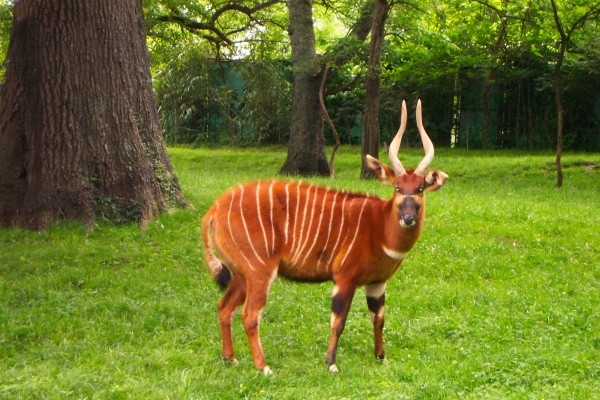Facts About Bongo
The bongo is a captivating forest-dwelling herbivore easily recognized by its striking reddish-brown coat, distinctive black and white markings, and long, slightly spiraled horns. These animals are primarily nocturnal and have a complex social structure. There are two subspecies of bongos: the western or lowland bongo and the eastern or mountain bongo. Unfortunately, the mountain bongo is classified as Critically Endangered, with its population dwindling due to habitat loss, poaching, and hunting.
Bongos are among the largest forest antelopes, with both males and females sporting impressive horns. Their vibrant auburn coats, adorned with white-yellow stripes and unique white facial markings, make them easily identifiable. As browsers, they primarily feed on leaves, bark, and fruits. Bongos also require salt in their diet and often visit salt licks to fulfill this need.
From a conservation standpoint, bongos face significant threats from habitat destruction and hunting. Efforts are underway to manage captive populations and reintroduce bongos into the wild. These conservation initiatives are essential to ensure the survival of both the western and eastern bongo subspecies. The mountain bongo, in particular, requires urgent protection to avoid extinction in the wild.
According to the IUCN, the western bongo is listed as Near Threatened, while the eastern bongo is Critically Endangered. Conservation efforts include monitoring wild populations, assessing genetic diversity, and collaborating with zoos and wildlife organizations. The future of bongos hinges on effective conservation strategies and habitat protection.

 Cameroon
Cameroon